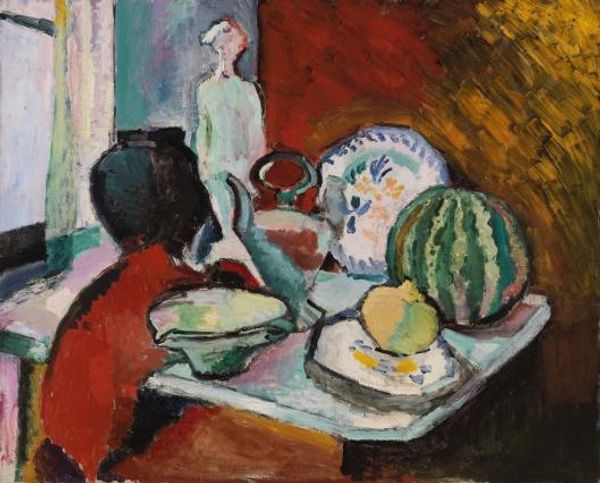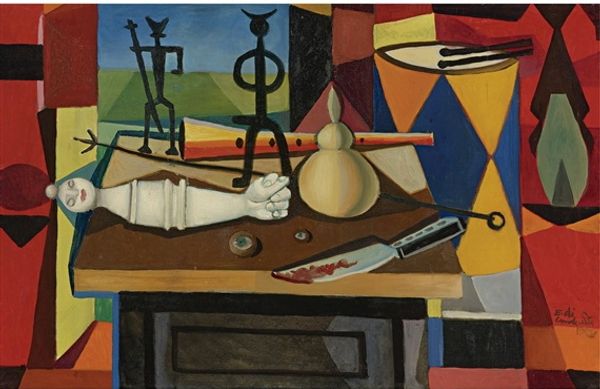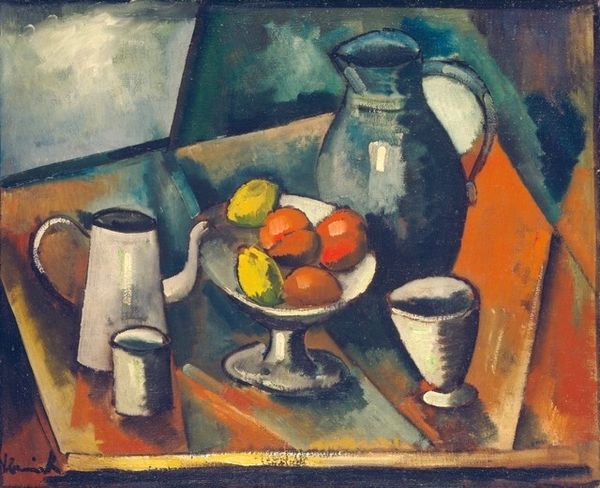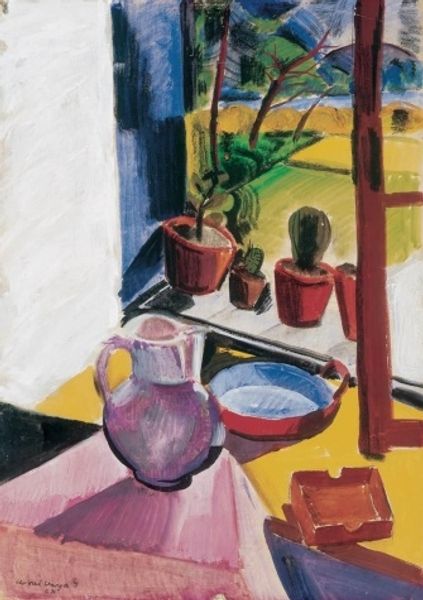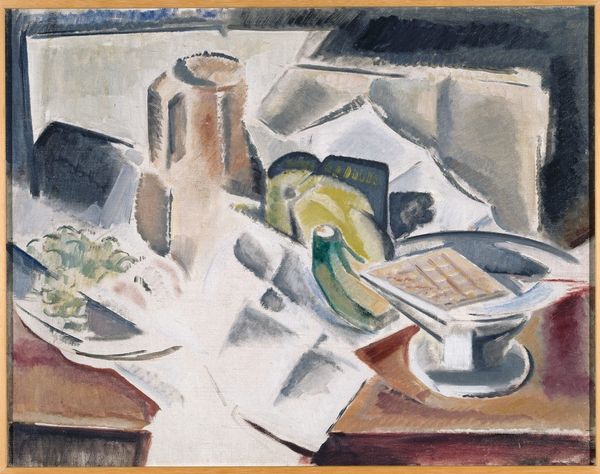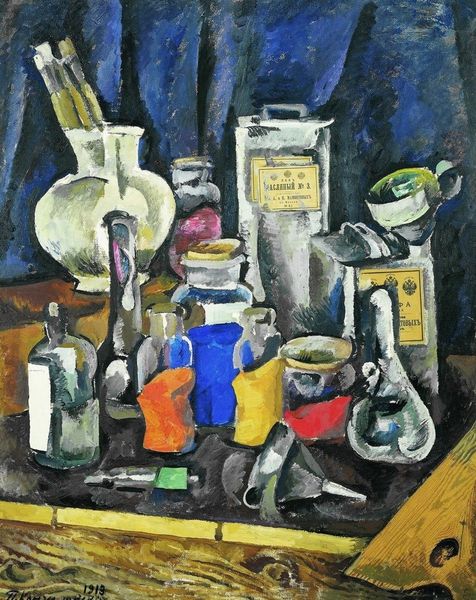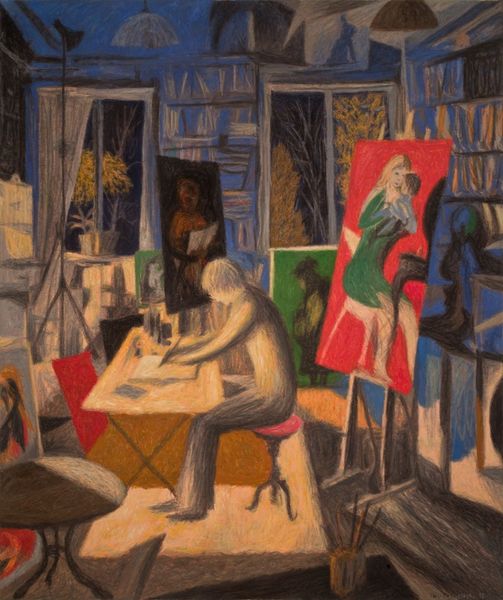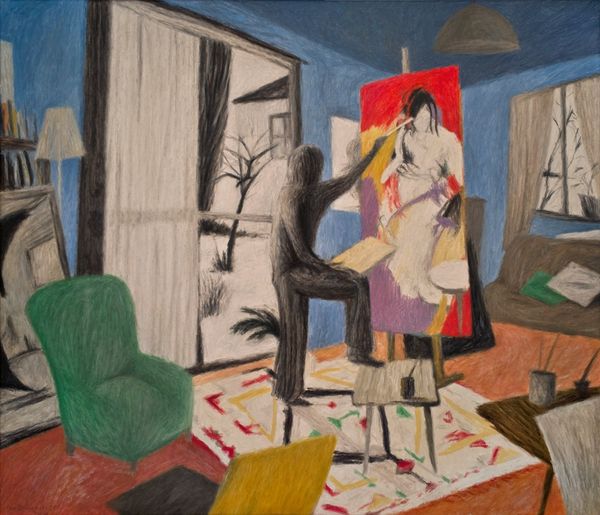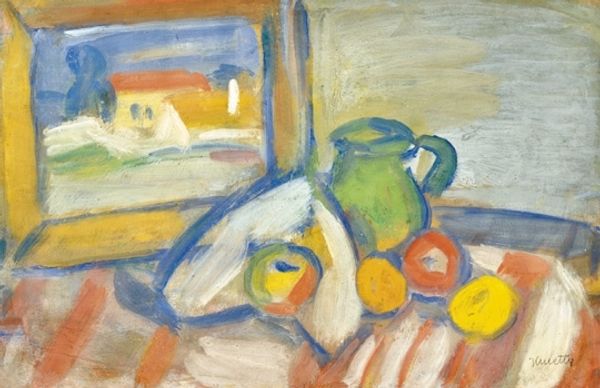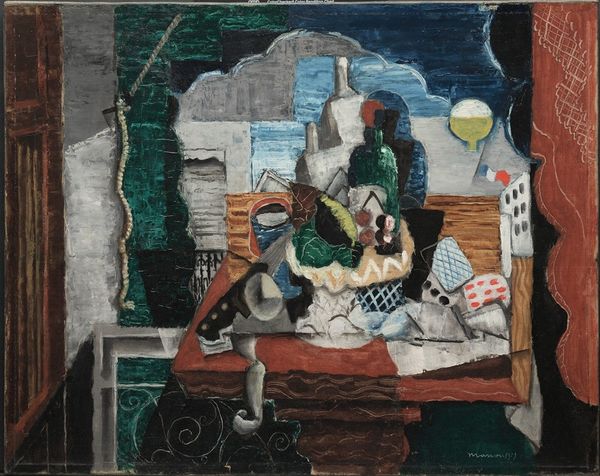
Copyright: Renato Guttuso,Fair Use
Curator: We're looking at Renato Guttuso's "Interno," painted in 1948 using oil on canvas. What's your immediate reaction to it? Editor: It strikes me as a composition of confined tension, yet pierced by an outside light. The colors are muted, save that jarring blue curtain and vibrant window view. It feels emotionally charged, maybe claustrophobic. Curator: Guttuso was working during a period of immense social upheaval in Italy. Consider the materiality – the thickness of the impasto, the deliberate brushstrokes. The postwar atmosphere fostered a renewed focus on Realism. Editor: Indeed. Even in this simplified still-life, I see that echoed. The radiator speaks of survival; a somber witness to the space, and the bottle. Is that wine or medicine? Are we observing refuge, maybe even resilience after trauma? Curator: It could be interpreted as such. Guttuso was part of the Fronte Nuovo delle Arti which explored similar subject matter, using abstraction to capture the unease of post-war society. Editor: Let's look at these stark contrasts and arrangements. The painting seems almost constructed—a table laden with everyday items: bottles, glass, a figure. Is this then a portrait, perhaps symbolic, not simply a still life study? Curator: Perhaps it blends both, reflecting his deep investment in socio-political themes. The layering suggests he reworked this painting with intense care and physical effort, suggesting labor. His post-impressionist leaning in style would definitely lean towards a figurative, symbolic one as opposed to an empirical and impressionist vision. Editor: Yes. The placement of the items upon the table become not simply placement but symbolic language to be decoded. Look at that drape and that blue curtain! Together they indicate mourning; the bottle of wine or perhaps other spirits further accentuating despair. There is an echo of mortality here. Curator: Fascinating insight. In thinking about his approach to the materials and how he uses them, there’s a deliberate attempt to use modest means to reflect the lives and surroundings of everyday people. Editor: The artist leaves so many visual cues embedded in domestic objects for us to ponder life beyond what the object can readily offer as something purely functional or material. Curator: A testament to how artists can use even the simplest things, transformed on canvas, to capture complex and challenging emotions from complex times. Editor: Agreed. Art truly reflects its time!
Comments
No comments
Be the first to comment and join the conversation on the ultimate creative platform.
